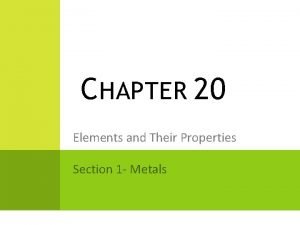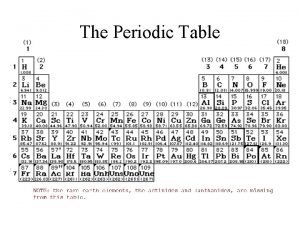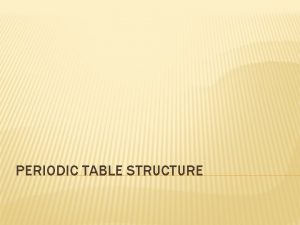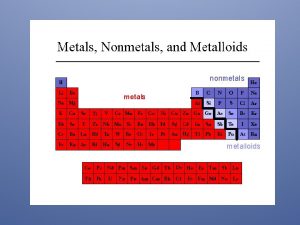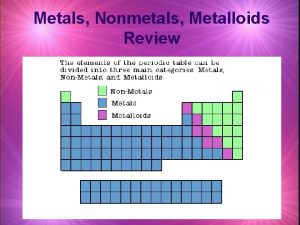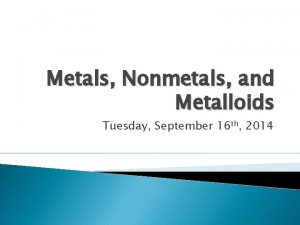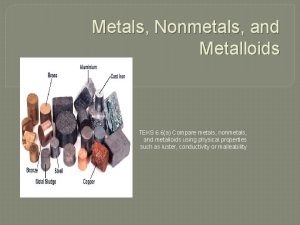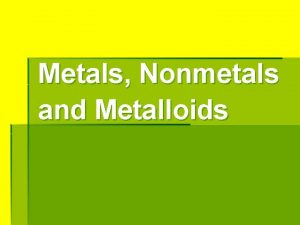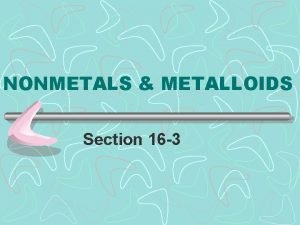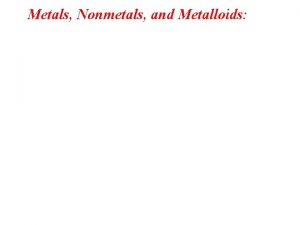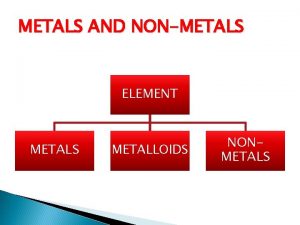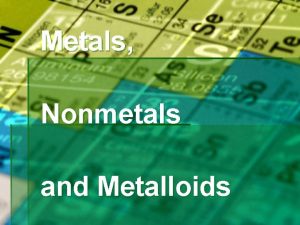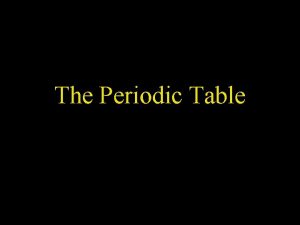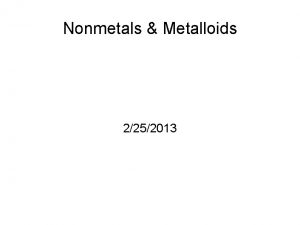Nonmetals Section 20 2 and 20 3 Nonmetals









- Slides: 9

Nonmetals Section 20. 2 and 20. 3

Nonmetals n Nonmetals- gases or brittle solids at room temperature. – not malleable or ductile. – do not conduct heat or electricity well – not shiny n Nonmetals don’t conduct electricity because- electrons are strongly attracted to the nucleus

Nonmetals n Nonmetals- gain electrons to form anions n Can form either covalent or ionic bonds n Diatomic- molecule that consists of two atoms of the same element covalently bonded – Includes H 2 Cl 2 F 2 N 2 O 2 Br 2 I 2 n Hydrogen reactive. is diatomic because it is very – Bonding makes it more stable

Nonmetals n Halogens- nonmetals from group 17. – very reactive. – 7 valence electrons – form reactive diatomic molecules with distinctive colors n Sublimation- changing directly from a solid to a vapor n Noble gases- stable due to full outer energy levels. – don’t make compounds naturally

Metalloid & Allotropes n Metalloid- can form ionic or covalent bonds. – properties of both metals and nonmetals n Allotrope- element different forms of the same – have different molecular structures n Semiconductor- element that conducts electric current under certain conditionslike Silicon

Diamond vs. Graphite n Both are made of carbon. n Diamond- clear, hard – each C atom bonded to four other C atoms forming a giant crystal. n Graphite- black powder with hexagonal layers of C atoms. – Each C is bonded to 3 other C. – Layers can slide past each other, so graphite is a good lubricant.



Synthetic Elements n Transuranium elements - elements that have an atomic number greater than 92 (uranium). – Synthetic (man made) and unstable n Scientists make elements to gain an understanding of the forces holding the nucleus together – To develop new technologies
 Elements and their properties section 1 metals
Elements and their properties section 1 metals Periodic table metals nonmetals semimetals
Periodic table metals nonmetals semimetals Characteristics of metal
Characteristics of metal Periodic table separating metals and nonmetals
Periodic table separating metals and nonmetals Metals metalloids and nonmetals periodic table
Metals metalloids and nonmetals periodic table Metals nonmetals semimetals
Metals nonmetals semimetals Where are the non metals on periodic table
Where are the non metals on periodic table Metals nonmetals and metalloids
Metals nonmetals and metalloids Compare metals nonmetals and metalloids
Compare metals nonmetals and metalloids Metals nonmetals and metalloids difference
Metals nonmetals and metalloids difference
